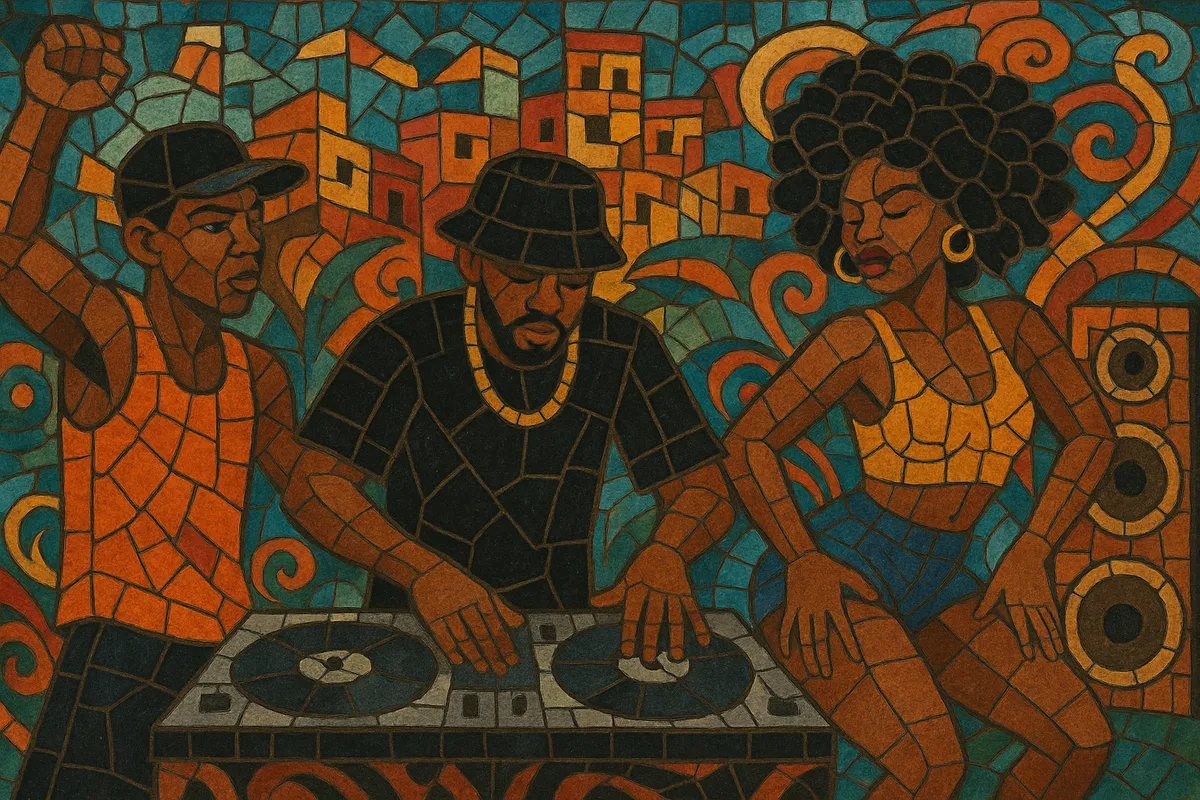Funk carioca, also known as baile funk, is a high-energy dance music born in the favelas of Rio de Janeiro. It blends the booming 808 sub-bass and drum-machine punch of Miami bass and electro with Brazilian street party culture, Portuguese slang, and call-and-response vocals.
At its core is the tamborzão rhythm, a syncopated, percussive groove that drives simple, looping beats and chant-like hooks. Lyrics range from playful and explicitly sexual (putaria) to socially conscious narratives and favela pride, and performances are designed for massive neighborhood bailes (street parties).
Over time the style has branched into many variants—from melodic radio-friendly hits to darker proibidão—and has influenced global club music while remaining a defining sound of contemporary urban Brazil.
Funk carioca emerged in Rio de Janeiro’s favelas in the late 1980s as local DJs began importing and reworking Miami bass, electro, and early hip hop records. Sound system crews and parties (bailes) amplified this bass-heavy music, while pioneers like DJ Marlboro popularized the sound via compilations (e.g., the landmark "Funk Brasil" series) and radio shows. Portuguese lyrics, neighborhood shout-outs, and call-and-response chants localized the style, differentiating it from its U.S. sources.
During the 1990s, the tamborzão groove crystallized as the genre’s signature beat—syncopated, minimal, and driven by 808 kicks, snares, and claps. Massive favela bailes became cultural hubs, while MCs delivered chants and hooks over stripped-down loops. Subcurrents appeared, from baile anthems to harder, street-focused tracks (proibidão), reflecting everyday life, joy, and tension within the communities.
The 2000s brought national visibility. Artists such as MC Marcinho and Tati Quebra Barraco scored radio hits; anthems like “Rap das Armas” (Cidinho & Doca) reached international ears, helped by films and media. The era also saw funk melody (more tuneful, romantic) enter the charts, while critics and authorities debated lyrics, sexuality, and public order. Despite controversies, the genre cemented its place in Brazilian pop culture.
Funk carioca splintered into new regional and stylistic branches: funk ostentação in São Paulo (luxury-focused lyrics), mandelão (heavier, hypnotic loops), and the faster “150 BPM” wave in Rio. Producers collaborated with international artists and DJs, and the internet/TikTok accelerated global reach. Rasteirinha’s slower, tropical swing and fusions with trap and pop further broadened the palette.
Today, funk carioca is a digital-native ecosystem—From bedroom producers circulating sample packs and montage edits to major stars blending funk with trap, pop, and reggaeton. Its templates power global club tracks, while the local scene continues to innovate and speak directly to life in Brazil’s urban peripheries.


